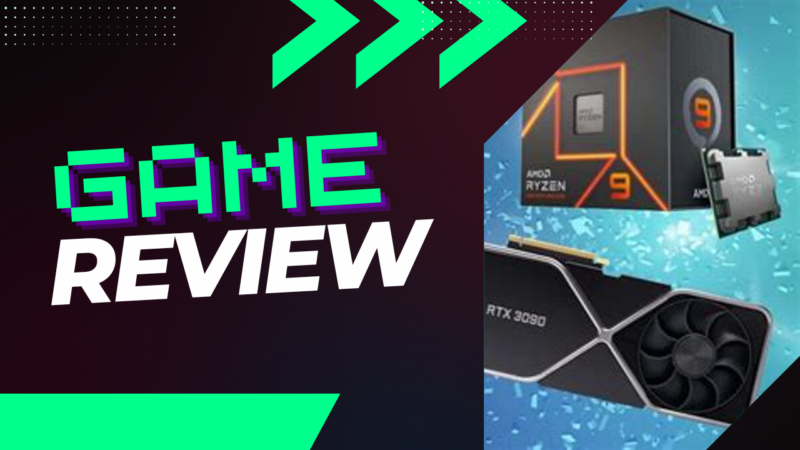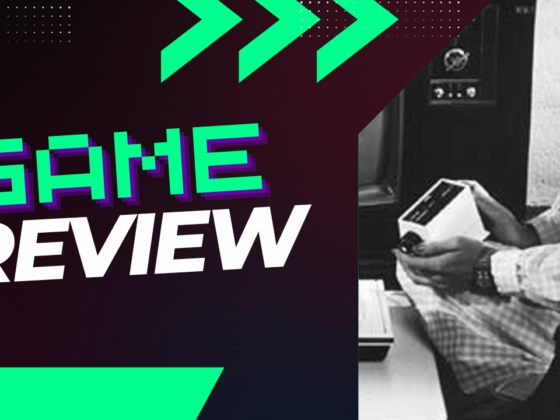Is League of Legends more akin to a CPU-squashing beast or a GPU-guzzling monster? For most gamers, the answer might come as a delightful surprise. Unlike other high-octane titles clamoring for top-tier graphics cards, League of Legends thrives on the backbone of a powerful CPU. This design choice invites players from all walks of tech—whether you’re wielding a pixelated sidekick or a state-of-the-art setup. As we dive into the heart of this game, we’ll unearth how CPU prowess shapes your Summoner’s Rift experience and what it means for your gaming ambitions.
Is League of Legends CPU or GPU Intensive?
When pondering whether League of Legends is more reliant on the CPU or GPU, the answer may come as a bit of a revelation. Unlike numerous modern games that demand high-end graphics cards for optimal performance, League of Legends is primarily CPU-intensive. This indicates that in order to achieve peak performance while playing, having a robust processor is essential.
Developed by Riot Games, League of Legends was intentionally designed to accommodate a wide demographic of players, including those utilizing lower-end hardware. Consequently, the game prioritizes processing power over graphical fidelity, allowing a broader range of players to participate, even on older or less powerful machinery.
Essentially, League of Legends leans heavily on the CPU rather than the GPU. While both components contribute during gameplay, the CPU’s function in processing game logic and player actions is vastly more significant. Thus, having a powerful CPU is fundamental for a smoother gaming experience and overall better performance. Nonetheless, a suitable GPU is still important for rendering high-quality graphics and effects. In summary, even though both the CPU and GPU data play a role in League of Legends performance, investing in a strong CPU should be a priority.
The Role of CPU and GPU in League of Legends Performance
When it comes to gaming, the hardware capabilities of your computer significantly influence the quality of your gaming experience. For League of Legends—a widely played multiplayer online battle arena (MOBA) game—the discussion surrounding whether it is more CPU or GPU-intensive has been a popular topic among players.
Understanding CPU and GPU Responsibilities in Gaming
To appreciate the influence of CPU and GPU on League of Legends performance, it’s crucial to understand their respective roles in the gaming landscape. The CPU, known as the central processing unit, executes instructions and performs calculations that drive your computer’s software. This includes responsibilities such as game logic, managing artificial intelligence, and physics calculations.
Conversely, the GPU, or graphics processing unit, is specifically built for rendering and displaying visuals. It alleviates some of the CPU’s workload by managing tasks related to graphics, such as rendering 3D models, processing shaders, and creating realistic lighting effects. The collaboration between the GPU and CPU is essential for delivering a fluid and visually engaging gaming experience.
Now, let’s delve deeper into the effects of these components on League of Legends and determine whether the game favors the CPU or GPU.
How the CPU Influences League of Legends
League of Legends predominantly relies on the CPU for critical tasks that involve game logic, AI computations, and facilitating network communication. This encompasses calculating damage, monitoring player movements, managing minion behavior, and orchestrating player interactions with the game environment. Consequently, a faster, more robust CPU can significantly improve the game’s overall performance and reaction times.
Moreover, the CPU is vital in maintaining a stable framerate, particularly during intense team battles or when there is significant activity on-screen. It ensures smooth gameplay by processing necessary calculations and relaying that information to the GPU for rendering. Therefore, possessing a capable CPU can mitigate FPS drops, decrease input lag, and create a more immersive gaming atmosphere.
It’s noteworthy that League of Legends is crafted to function efficiently across a variety of hardware setups, including lower-end systems. This design allows the game to run adeptly on older or less powerful CPUs. However, to fully maximize the advantages of contemporary gaming hardware and achieve higher framerates, upgrading to a more powerful CPU is advisable.
The GPU’s Contribution to League of Legends
While the CPU is primarily accountable for handling the majority of game logic and calculations within League of Legends, the GPU plays a crucial role in delivering visually appealing graphics. It is tasked with rendering the game’s 3D models, textures, special effects, and user interface elements. A capable GPU guarantees smooth gameplay with high-quality visuals, providing players with an enriched gaming experience.
Within League of Legends, performance and visual fidelity can be adjusted through in-game graphics settings. These settings allow players to tailor the game’s graphics quality to their hardware capabilities. Higher-end GPUs are adept at accommodating more demanding graphics settings, leading to enhanced visuals, finer details, and a smoother gaming experience.
However, it’s essential to recognize that League of Legends doesn’t place the same demands on the GPU as many other modern AAA titles. This means that even mid-range or older GPUs can often handle the game at higher graphical settings without obvious performance hitches. Nevertheless, an upgraded GPU can elevate the visual experience and help ensure a consistent framerate, especially when paired with a competent CPU.
Striking the Right Balance for Optimal Gameplay
For those seeking to optimize their system for League of Legends, discovering the right equilibrium between the CPU and GPU is critical. As previously discussed, the CPU manages most of the game’s calculations to facilitate smooth gameplay, while the GPU is responsible for rendering attractive graphics.
If your setup includes an older or less powerful CPU, concentrating on upgrading this component can vastly enhance your gaming experience by promoting better performance and stability. However, if your CPU is already up to par, investing in a superior GPU can improve visual quality, allowing you to enjoy the game’s graphics at elevated settings.
Furthermore, it’s vital to consider additional factors that might impact your gaming sessions, such as RAM and storage capacity. Ensuring ample RAM and utilizing a swift storage solution, like an SSD, can further augment performance and decrease loading times in League of Legends.
In conclusion, while League of Legends predominantly relies on the CPU for game mechanics and calculations, the GPU’s contribution to delivering high-quality graphics remains significant. To achieve the ideal gaming performance, maintaining a balanced system with both a competent CPU and GPU, complemented by adequate RAM and fast storage, is essential. By striking this balance, you can secure a seamless and engaging gaming experience in League of Legends.
League of Legends: A CPU or GPU-Heavy Game?
League of Legends (LoL) is a well-known online multiplayer game crafted by Riot Games. A common inquiry among players revolves around whether the game prioritizes CPU or GPU usage. The answer lies in understanding the game’s requisites and its resource allocation.
Although LoL dazzles with its visually attractive graphics, featuring intricate character designs and vibrant environments, it is fundamentally a CPU-heavy game. The title heavily leans on the CPU’s processing power for managing game mechanics, AI computations, and interactions between players. This reliance ensures that gameplay remains smooth, timely, and has stable frame rates.
Despite this, it’s important to highlight that the GPU is by no means unimportant in LoL. The GPU holds vital responsibility for rendering graphics, effects, and animations. A decent GPU can markedly improve visual quality, minimize input latency, and enrich overall immersion. While the GPU’s performance impact is noteworthy, it remains secondary to that of the CPU.
To maximize your experience in League of Legends, achieving a balance between a powerful CPU and a capable GPU is key. A high-performance CPU will facilitate smooth gameplay, while a robust GPU will enhance visual enjoyment. This equilibrium becomes incredibly important for competitive gaming, smooth streaming, and recording gameplay sessions.
Key Takeaways
- League of Legends is predominantly CPU-intensive compared to GPU-intensive.
- A strong CPU is critical for smooth gameplay in League of Legends.
- A dedicated graphics card is not essential for optimal League of Legends performance.
- Maintaining sufficient RAM is significant for assuring seamless gameplay in League of Legends.
- Enhancing your CPU and RAM will typically yield greater performance enhancements than upgrading your GPU for League of Legends.
Frequently Asked Questions
League of Legends, recognized as one of the premier online multiplayer games, often prompts inquiries regarding its hardware demands. This section will address a commonly asked question related to League of Legends and its resource use: Is League of Legends more CPU or GPU intensive?
1. What Does League of Legends’ Resource Consumption Look Like?
League of Legends is largely considered a CPU-oriented game. While the game does take advantage of the GPU, the CPU is paramount to ensuring smooth gameplay. It governs the game’s logic and AI, processes player inputs, and oversees network communication. Consequently, possessing a capable CPU is essential for optimal League of Legends performance.
That said, while the CPU holds a greater influence over performance, having a decent GPU is also advantageous. The GPU manages rendering for the game’s graphics, effects, and animations. A more powerful GPU can boost graphical fidelity and overall visual quality, creating a more immersive experience for players.
2. How Can I Enhance League of Legends Performance?
To elevate League of Legends performance, the initial focus should be on bolstering your CPU performance. Ensure your CPU isn’t hindered by unrelated processes or background applications. Shut down any unnecessary programs and verify that your antivirus software isn’t conducting resource-heavy scans while you’re playing the game.
If you’re experiencing regular performance issues, contemplate upgrading your CPU as a viable solution.









